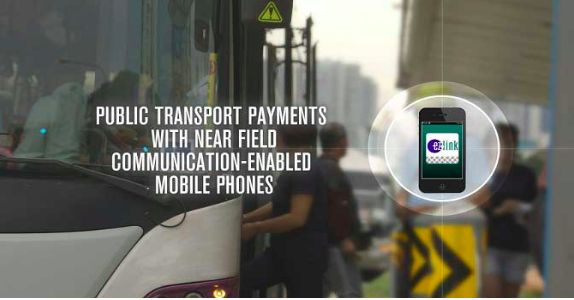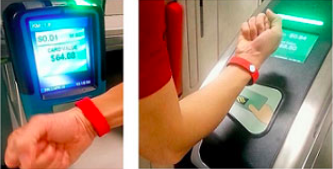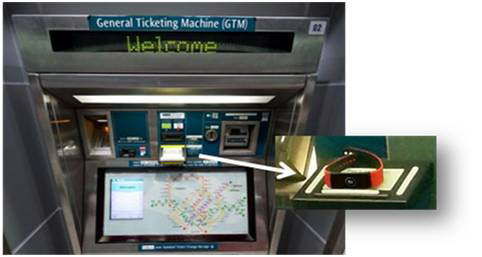Contactless fare payment? OR Con-Text-Less Fair Payment?
by Chen Xinyi, Leo Qiyi Joel, Kok Wei En Isaac
09 Sep 2018
Do you find it troublesome to have to take out your wallet/card to tap the gantry every single time your board a bus/ train? Have you ever boarded a bus or entered an MRT station and wished you could just walk past the gantry without having to lift a finger to take out your wallet to tap at the gantry? Well that dream of yours may not be that far in the future as you might think.. With the invention of NFC.. That dream would definitely be possible.. In this article we would be focusing more on the contactless fare payment in the TRANSPORT INDUSTRY! So prepare to take the ride with us as we talk about the advantages and disadvantages of contactless fare payment in the TRANSPORT INDUSTRY…
So What is contactless fare payment?
Contactless Fare payment is (simply putting it) paying your fares without contact (hands-free). With the new Near Field Communication (NFC) SIM, users of compatible NFC-enabled mobile phones can walk in and out of the MRT station using their phones. NFC-enabled payments are also accepted on taxis.

Why are we exploring this? What advantages do they have?
- With more Singaporeans relying on their mobile devices, tech gadgets and credit/debit cards to carry out everyday transactions, the Land Transport Authority (LTA) is leveraging new technologies to make fare payments on public transport more convenient for commuters.
- Imagine you would only have to bring your mobile phone out in the future (and leve your bulky wallet at home) as everything you need be it your wallet, your cash, your watch, your ID, etc would all be in your phone and hence reducing the amount of stuff commuters would have to bring out therefore increasing convenience for everyone
- More innovative and faster fare payment systems for bus and train journeys means commuters can zip through fare gates by simply scanning their devices
- As most people would have their phones with them, hence all the machine have to do is to use the phone’s NFC and connect with it to make the payment. Hence, the commuter doesn’t even have to take out his/her phones/wallet/card to pay for the fare and just walk past the scanning gantry and the fare would automatically be deducted and hence saving a lot of time.. And there would no longer be a queue waiting for someone infront (of the queue) to slowly take out their wallet/card.
- It could also potentially doing away with the hassle of topping up fare cards!
- As contactless fare payment would use NFC (or other methods that have yet to be invented) fare cards may be a thing of the past and most people could easily connect their phones virtual ez-link card to their bank accounts and giro money to their virtual ez-link card whenever they need the money.. Therefore removing the need to top up the fare cards in person as everything can be done virtually and efficiently.


However, with advantages .. there must be disadvantages too!
- The largest disadvantage is the security and safety of your information and your bank account information
- For contactless fare payment to work, the NFC of the phone would always be on and as such hackers could hack into the gantry system and have access to it and hence when you walk past could also have access to your phone info, etc and people do not even need to be close to you to steal your money (they can do it through the NFC of your phone) unlike conventionally, when people use fare cards, it would be a lot harder to steal the card as compared to the info on your phone… Though this can be stopped/ prevented by adding higher security(anti-virus software,etc) to your phone and the gantry system which could be easily added to the system to stop hackers from gaining access to your phone
- A lot of time and work would also need to be placed in to implement such a system and the success rate of this project may not be high
- This is because our country’s fare payment system is using fare cards(tapping your card at the gantry to pass) however, if we were to do this contactless fare payment project, our entire system would have to change.. More sensors would be added, our fare gates would have to be change which could bring unforseen inconveniences to the commuters..
- Also not all commuters have NFC-enabled phones and people may also not be willing to change since they are so use to tapping their card at the fare gate. Hence the success rate of project may be low
- This can be slightly avoided by testing it out on a small group of people and change the plan according to the people’s remarks/comments
What’s in the works?
- Health and fitness wearable devices that doubles as payment modes for public transport rides
- The Batman v Superman Fitness Tracker X EZ-Link and Garmin vívosmart HR devices can not only be paired with a mobile app via Bluetooth to monitor steps and/or sleep and fitness activity, they also come with the ez-link CEPAS purse that allows for contactless payments!

- Account-Based Ticketing (ABT) System for public transport fare payment pilot
- LTA and MasterCard will jointly launch a pilot on 20 March 2017 that will allow commuters the ease of direct payment of public bus and train rides using contactless credit or debit cards. Commuters will be saved the hassle of topping up credits on their fare cards, and will be charged via their credit/debit card bill.
Quiz Time!
To test yourself on what you have learnt from the articles in the website and stand a chance to win some prizes and online achievement tokens, you can spend less than five minutes answering some easy questions at the Google Form here.
Some Useful Links For More information:
EZ-Link ventures into a new era of payment wearables with Garmin and Watchdata Technologies
LTA pilots account-based ticketing system for public transport with MasterCard
Bringing greater commuting experience with innovative fare payment systems
Near Field Communication-enabled mobile phones now usable for public transport payments